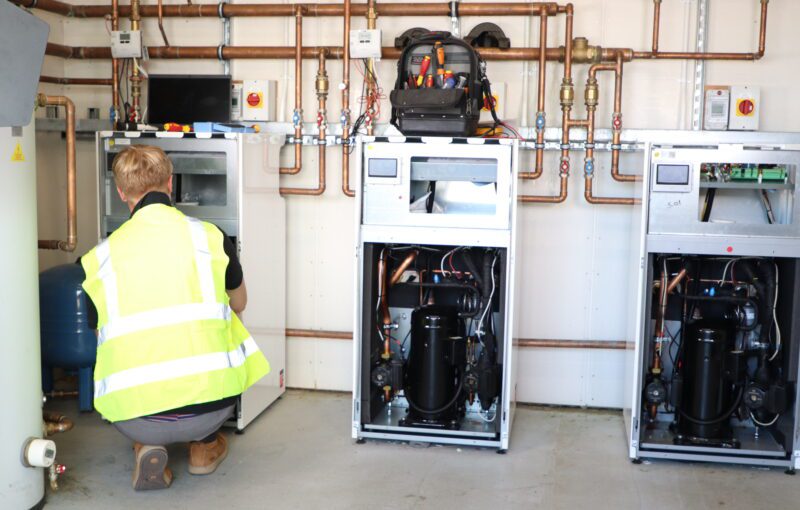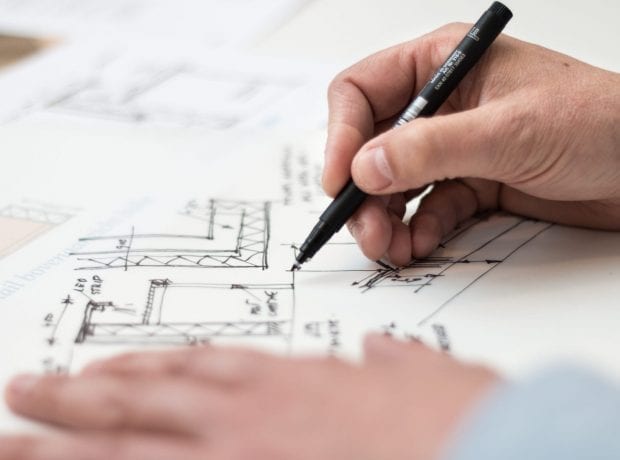Explore Kensa’s top tips and training videos to install a ground source heat pump with confidence – whether you’re new to ground source or up-skilling.

Explore Kensa’s top tips and training videos to install a ground source heat pump with confidence – whether you’re new to ground source or up-skilling.

Heat pumps are a key low-carbon technology as we phase out the use of fossil fuels, such as wet wood-burning and gas.
Installing a ground source heat pump to harness free, renewable energy from the ground is the best way to reduce carbon emissions associated with heating and cooling our homes.
The Government is committed to growing the UK heat pump market rapidly to meet its net zero emissions targets.
Ground source heat pumps are a great technology and this is the way the industry is going. Plumbing and heating engineers need to have a serious look and speak with manufacturers like Kensa. There’s more to life than gas boilers!Matt Owen, Owner, Home Plumbing & Heating
Any competent builder or plumber can fit a Kensa ground source heat pump – the installation itself is surprisingly straightforward.
We recommend that all installers contact Kensa to undertake our free Ground Level Training Course. On our Installer Training Pathway, you can learn at your own pace and grow your ground source knowledge and business opportunities.
Once you have undertaken training with us, you can use our MCS Umbrella service to ensure your heat pump installations are fully accredited by the Microgeneration Certification Scheme (MCS). This is vital to provide an extra level of assurance for end users and to qualify for funding.
If you’re already an MCS Accredited ground source heat pump installer, Kensa can give you bespoke support to ensure the best quality installations.
DISCOVER TRAINING OPPORTUNITIESKensa’s ground source heat pumps are designed for British homes and with ease of installation in mind, making them as easy to fit as a standard boiler.
If you are traditionally a gas heating installer, transitioning to fitting ground source heat pumps is straightforward and reduces risks, cost, and time. Unlike a gas boiler system, a ground source heat pump has no flue or ventilation requirements, no condense pipe to fit, no more landlord gas safety checks, and simpler and cleaner servicing.
Designing a heating system to work with a ground source heat pump is exactly the same design as is required for a condensing gas boiler that actually condenses i.e. runs at 50°C.
Installers who can design and install a gas heating system that runs at the temperatures required for the boiler to condense (and not at the higher, less efficient temperatures) have all the skills they need to install a ground source heat pump. And Kensa will provide you with all the necessary support to cover the installation of the ground array.
msc umbrella service

The groundwork and its contractor provide a connection to the ‘heat source’ in the same way that the utility companies are responsible for providing connections to the gas, electricity or water grids. In a typical project featuring a gas boiler, the plumber would only be responsible for installing the boiler and would not handle the provision of the gas supply to the property. Kensa is simply mirroring this approach.
For a ground source heat pump to operate correctly, it’s important that all the air is removed from the ground arrays before the heat pump is turned on. Failure to do this correctly can cause the heat exchanger to freeze and the heat pump will stop working. If this happens, you would have to leave the heat pump to defrost at least 24 hours and then re-purge the ground arrays.
To remove the air from ground arrays, you will need a suitable purge pump. For slinkies, the longest slinky trench is 50m, which will contain a total of approximately 300m of pipe. To achieve the minimum velocity required to remove the air, a minimum pump power in excess of 1kW is required. In addition, the pump needs to have a flow of at least 60 litres per minute against a pressure of at least 1 bar. To achieve this, you will need a multi-stage pump.
A normal cold water main in a building has insufficient flow to force out this air. Mains water is also aerated, so it should not be used.